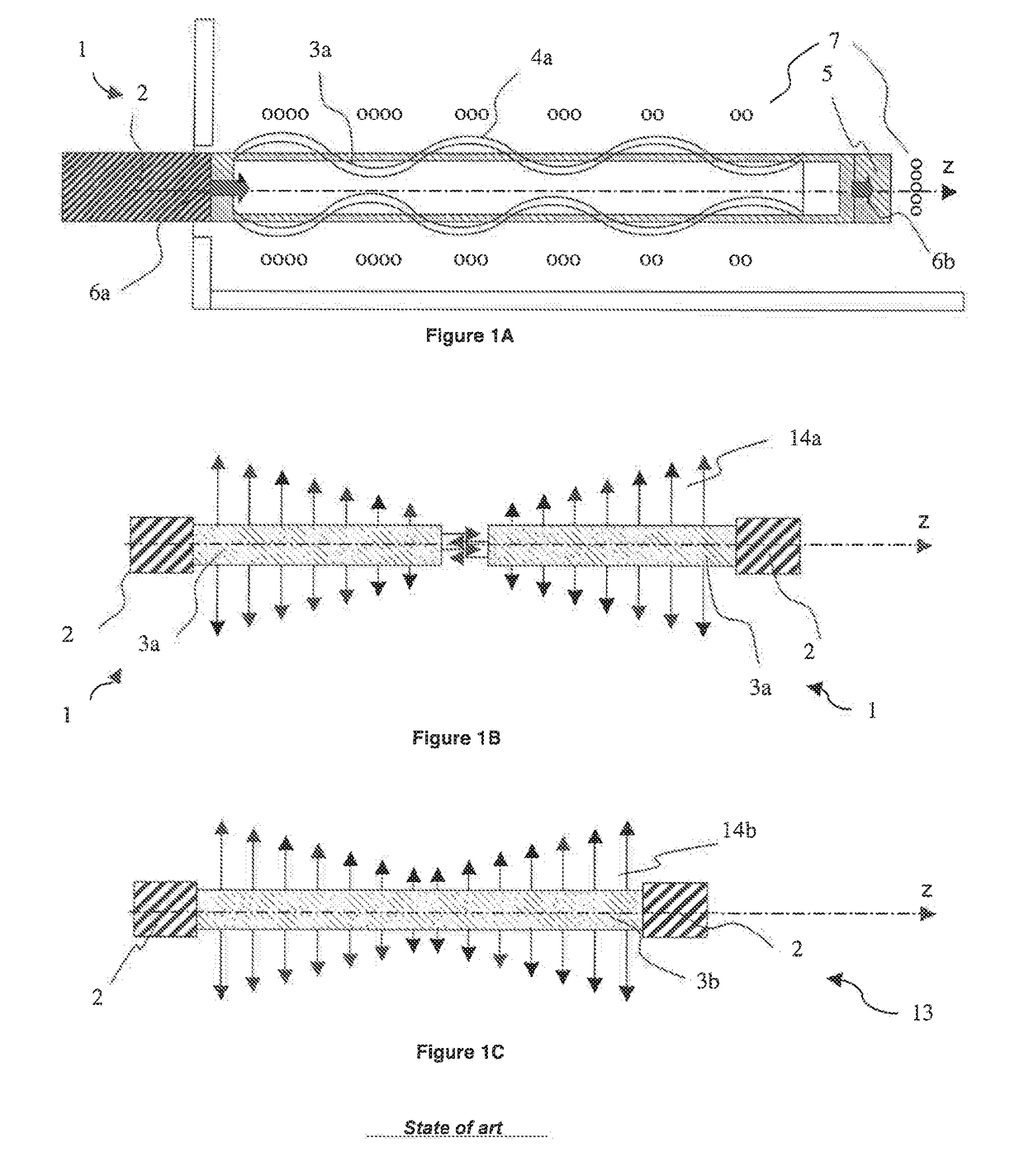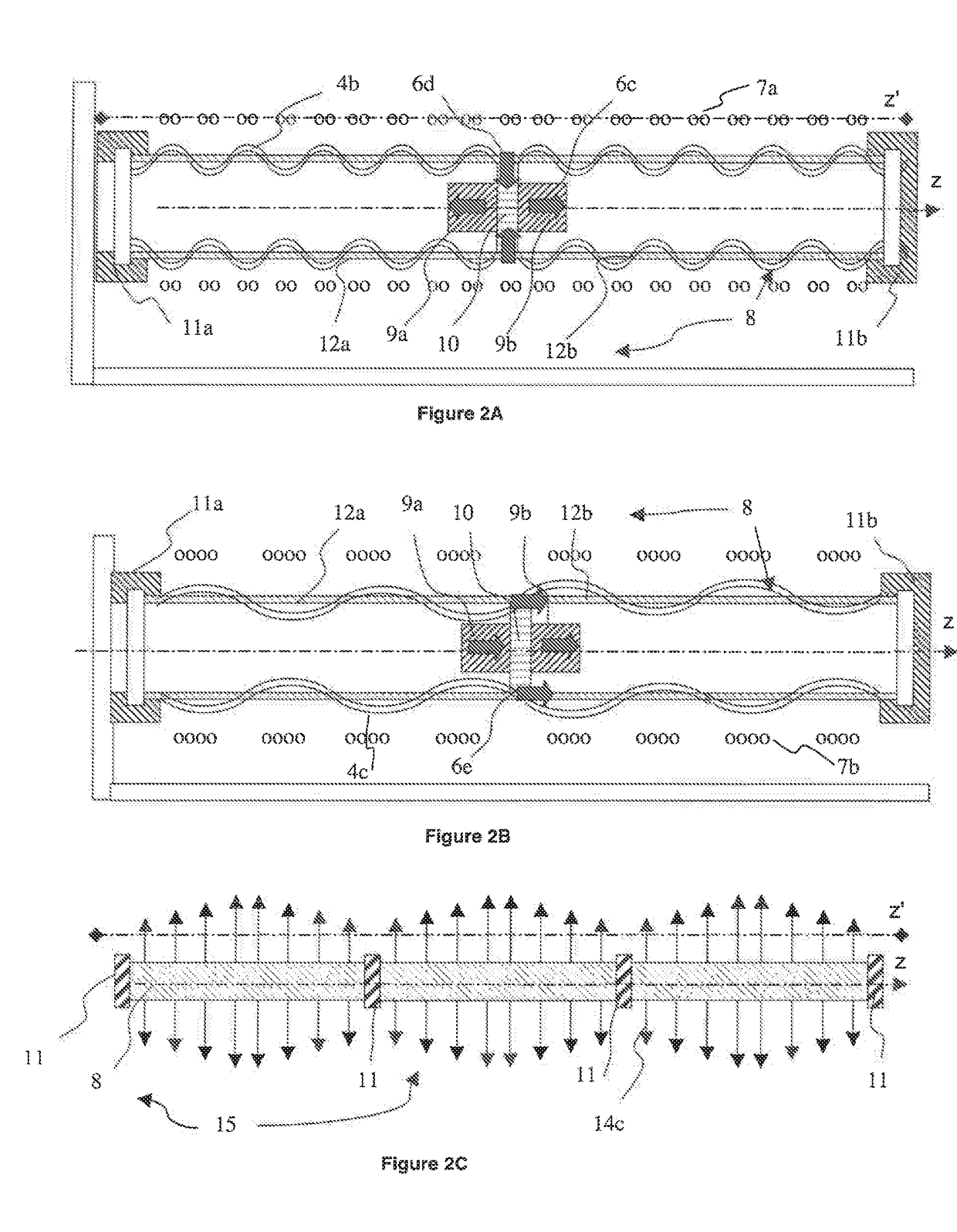Modular, submersible ultrasonic tubular transducer
a tubular transducer, submerged technology, applied in piezoelectric/electrostrictive resonant transducers, sound producing devices, chemical/physical/physicochemical processes, etc., to achieve the effect of reducing the number of vibration nodes, improving the homogeneity of the acoustic field, and reducing the vibration at the end
- Summary
- Abstract
- Description
- Claims
- Application Information
AI Technical Summary
Benefits of technology
Problems solved by technology
Method used
Image
Examples
Embodiment Construction
[0070]FIGS. 2A and 2B represent a symmetrical transducer (8) according to the invention illustrating two different operating modes.
[0071]In a first operating mode (FIG. 2A), called radial mode, the symmetrical transducer (8) is composed of two symmetrical electromechanical converters (9a, 9b), a coupler (10) and a tubular structure (12a, 12b) designed for radial acoustic generation. The two converters are placed along a z-axis, symmetrically on each side of the coupler (10), which is located in the central plane of the tubular structure (12a, 12b), formed by two adjoined tubes (12a, 12b) and aligned on the z-axis.
[0072]The two converters (9a, 9b) are excited in phase, which produces axial expansion vibrations (6c) in compression on the coupler (10). This device will then convert the axial vibration (6c) into radial vibration (6d). This radial vibration (6d) enables the radial vibration mode (4b) of the tubular structure (12a, 12b), designed for radial acoustic generation, to be exci...
PUM
 Login to View More
Login to View More Abstract
Description
Claims
Application Information
 Login to View More
Login to View More - R&D
- Intellectual Property
- Life Sciences
- Materials
- Tech Scout
- Unparalleled Data Quality
- Higher Quality Content
- 60% Fewer Hallucinations
Browse by: Latest US Patents, China's latest patents, Technical Efficacy Thesaurus, Application Domain, Technology Topic, Popular Technical Reports.
© 2025 PatSnap. All rights reserved.Legal|Privacy policy|Modern Slavery Act Transparency Statement|Sitemap|About US| Contact US: help@patsnap.com



